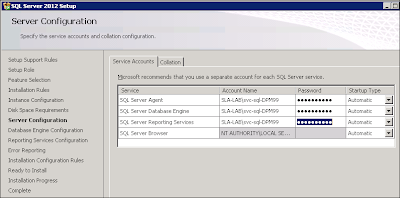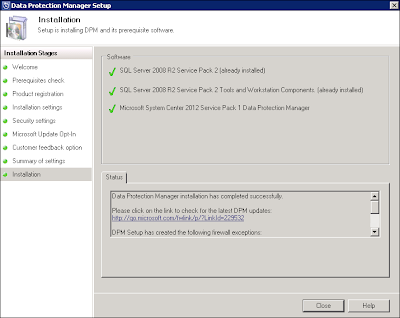Nethertheless you can use an existing local instance of SQL 2012 Server on the computer that you are installing DPM. In this post I will show you how to install DPM 2012 SP1 (On W2K8R2 OS) using local SQL 2012 SP1 instance.
Step 1: Install SQL2012 SP1 with Reporting Service on your DPM server
Launch your SQL 2012 SP1 DVD or ISO.
# Feature Selection, you need to select:
- Database Engine Services
- Reporting Services - Native
- Management tools - Basic / Complete (Optional)
# Instance Configuration :
- Named Instance: YourSQLNamedInstance (e.g LOCALDPM)
# Server Configuration: It's a sandbox, so for SQL accounts, I will use the same domain account for each role.
# Database Engine Configuration :
- Choose your Authentication mode : Windows authentication mode
Don't forget to add your account or your group to be SQL server administrators.
Step 2: Now it's time to Install DPM 2012 SP1
Launch your DPM 2012 SP1 DVD or ISO.
# Prerequisites check: Select Use an existing Instance of SQL Server
Type the name of your SQL instance: YourDPMServerName\YourSQLInstance
Then click on Check Again
If you passed prerequisite check, the "Next" button is no more Grey-out, Click on Next
# Installation Settings: Click on Next (again)
# Summary of Settings: Review Summary of Settings and click Install
# Installation: Your installation will failed :) Because you need to install SQL 2K8R2 SP2...
Not really, because if you try to install SQL2K8R2 SP2, wizard will tell you that your SQL components are already upgraded.
So just launch again DPM 2012 SP1 installation and this time you won't get any error message. Installation has completed successfully :)
At last, you may take a look in the SQL Server Management Studio. Yes your DPM DB is here. Good Job :)











